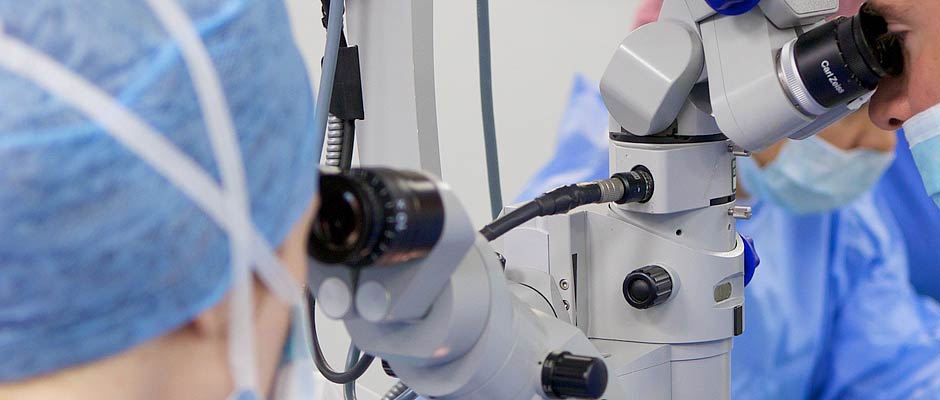
Eye (ophthalmologic) surgery
Cataract, squint, lacrimal, pterygium and retinal surgeryCataract surgery is a procedure used to treat cataracts, causing blurry vision and increasing the glare from the lights, thus affecting patient’s daily activities.
During the operation, the surgeon makes a tiny incision (cut) in patient’s eye to remove the affected lens. When the lens has been removed, the surgeon inserts a small plastic lens, called an intraocular implant or intraocular lens, in its place.
This is a corrective surgical procedure to improve the appearance of the eyes, sometimes to correct double vision or, in young children, to try and develop the co-ordination of the two eyes to work together for 3-D (depth) vision.
Squint surgery is a very common eye operation. It usually involves tightening or moving one or more of the outside eye muscles which move the eye to change the eye position.
Lacrimal surgery is a sub-specialty of ophthalmology which focuses on disorders of the tear-drainage system like narrowing or blockage.
Dacryocystorhinostomy (DCR) is a common surgical procedure used to treat blocked tear ducts. It involves creating a new channel from the tear sac to the inside of patient’ nose.
If the drainage channels on the inside of patient’ eye (canaliculi) are completely blocked by tears, an operation to drain them usually involves inserting a small glass tube (called a Lester Jones Tube) to drain the tears.
Pterygium is a benign thickening of the outer coating (conjunctiva) of the eye that grows onto the cornea.
Pterygium surgery involves removal of the abnormal pterygium tissue and the gap in the conjunctival tissue, where the pterygium was removed, is filled with a transplant of tissue that has been painlessly removed from underneath the upper eyelid.
